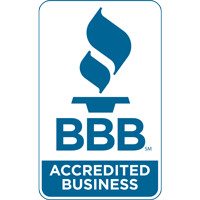
A furnace is almost always a background player in your home, helping keep you warm during the cold winter months. It regularly isn't noticed until something goes wrong.
One cause could be that your furnace has a cracked heat exchanger. It’s a potentially dangerous issue, so it’s important to familiarize yourself with the symptoms of a cracked heat exchanger and what you should do if you suspect that is the problem.
What Is a Heat Exchanger in a Furnace?
A heat exchanger transfers heat from the combustion chamber of your furnace to the air that circulates through the ventilation. It usually accomplishes this using coils or tubes that warm the air while serving as a barrier to keep the gasses produced in the combustion chamber, called flue gasses, from leaking out into your home.
Is a Cracked Heat Exchanger Dangerous?
Thanks to its central role, it isn't surprising that a broken heat exchanger can be hazardous. Cracks in the heat exchanger can allow dangerous gasses – like carbon monoxide, which can be lethal – to circulate through your home.
For that reason, do NOT use your heater if you think it has a cracked heat exchanger, as this could make the entire household sick. Reach out to an HVAC professional immediately if you are worried your heater has a cracked heat exchanger that needs to be repaired.
Four Signs of a Cracked Heat Exchanger:
- Furnace turns off: A crack in your heat exchanger may cause your furnace to shut off.
- Odd Smells: If the air leaving your furnace has a strong chemical scent, it could be an indicator that gas is slipping through cracks in your heat exchanger. These gasses, which may smell like formaldehyde, are a significant warning sign.
- Carbon monoxide alarm goes off or you recognize health problems: If a cracked heat exchanger is releasing carbon monoxide into your home, your carbon monoxide alarm may go off or household members might start experiencing signs of carbon monoxide poisoning. Side effects include headaches, dizziness, weakness, nausea, vomiting or feeling drowsy. If an alarm goes off or you feel unwell, exit the home immediately and then call for help.
- Soot: If you spot black sooty accumulating on the exterior of your furnace, it’s an indication something may be seriously wrong.
What to Do if the Furnace Heat Exchanger is Cracked
If you suspect your furnace has a cracked heat exchanger, contact a pro with extensive experience in furnace installation Ellsworth as soon as possible so they can examine your system and, if required, start a furnace heat exchanger replacement. Costs will vary depending on the situation, but estimates can roughly suggest $1,000 to $3,000.
Fortunately, the good news is that heat exchangers are generally included in the warranty. You should check the warranty paperwork on your furnace, as while the warranty might not cover the entire cost of repairs, it still may significantly shrink your bill.
How to Prevent a Cracked Heat Exchanger in Your Home
One of the easiest ways to prevent a problem in your furnace overall is through regular furnace maintenance. Furnaces work the best when they operate efficiently. Hiring a trained professional to inspect your furnace for worn-out parts, dirty filters and other potential problems can keep you from getting a big bill later on.
It’s also helpful to take a look at your furnace filters every few months – it’s encouraged some filters be replaced every 90 days or sooner if they are dirty or grimy. While the filters are not part of the heat exchanger itself, the strain of drawing air through a clogged filter makes the entire furnace work more vigorously to do its job. And the harder your furnace has to work, the more deterioration pieces like the heat exchanger will sustain.

